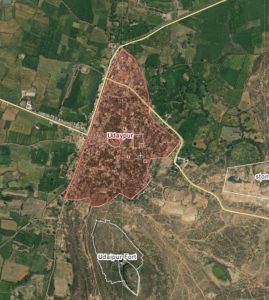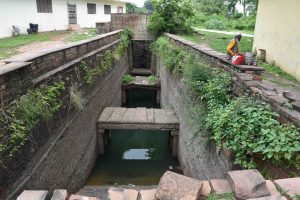Udaypur उदयपुर ادے پور (Madhya Pradesh). Stepwell of the time of Shāh Jahān.
Udaypur उदयपुर (Madhya Pradesh). Record of a temple procession in V.S. 1394
Inscription in the southern forehall (mukhamaṇḍapa) of the Udayeśvara temple at Udaypur, district Vidisha, Madhya Pradesh. It is engraved on the side of a sculptured balustrade (vedikā) visible to the right of the entrance passage. The record is badly weathered on the sides but contains six lines written in devanāgarī script. It refers to a jātrā, i.e. yātrā festival and pilgrimage by one Harirāja (?) on Thursday, second day of the dark lunar fortnight of Māgha in the expired Vikrama year 1394, which gives the date 8 January 1338 CE.
Udaypur tri-lingual stepwell inscription dated 1645 CE
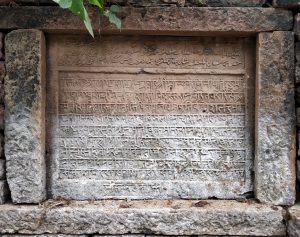
Udaypur (Madhya Pradesh). Stepwell inscription in Arabic, Persian and Sanskrit.
On a stone slab affixed into the right side wall of a stepwell known as Qanungo Baoli, located on the eastern outskirts of Udaypur, Vidisha District, Madhya Pradesh. A tri-lingual inscription of 13 lines carved in relief with the first three lines written in Arabic and Persian in nastaʿlīq script, and the next ten lines written in Sanskrit in nāgarī script. It records the construction of the stepwell by Gokuladāsa and Dāmodaradāsa, sons of Qānungo Haridāsa of Māthura kāyastha family, during the reign of Mughal emperor Shāhjahān (r. 1628-58). The date is given in three different eras—vikrama saṃvat 1701, śaka 1566 and hijri 1054—equivalent to Friday, 13 January, 1645 CE.
Singhpur stepwell with an inscription of VS 1535/1479 CE
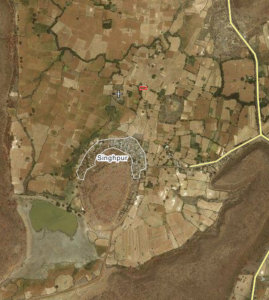
Singhpur (Ashoknagar अशोकनगर). Rājmatī stepwell (Wikimapia).

Singhpur stepwell inscription of VS 1535 (© Saarthak Singh).
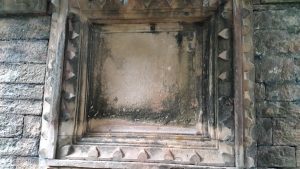
Singhpur stepwell, damaged companion inscription (© Saarthak Singh).
Singhpur (Ashoknagar). Stepwell with inscriptions in mixed Sanskrit recording the construction of the stepwell by Rājamatī in VS 1535.
Ujjain stone inscription of Naravarman
Ujjain उज्जैन (Madhya Pradesh).
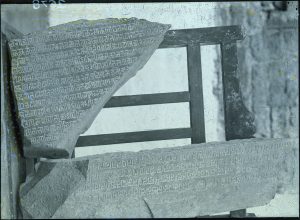
Two fragmentary Sanskrit inscriptions on black stone from Ujjain, Madhya Pradesh, unearthed in dismantling a house in the Town Improvement operations and preserved at the Madhava college. Photographed by the Gwalior State archaeology department in 1924-25, glass negative no. 227 of samvat 1981.
Working transcription by Saarthak Singh (2020)
Inscription I
1. ]vagāhya sarayūṃ jitvāśramaṃ sainikaiḥ sākētopavanāvanī-ṣukakali[
2. ]haklamaṃ nītē kāṃtaiḥ sahamalayaśailē-yuvatibhiḥ| yadātaṃkāllaṃkāvi[
3. ]vidānūnaṃ yēna himādrim-ūrdhviśi_lī vakrēlakāvagrahaḥ||18||[
4. ]19||tasmin viślaṣa-śruṣyattridi_purapunaḥ prītisatrōtsavā[
5. ]jaśiyēḥ saṃyati-prōtkhāyōtkiratōḍu-vibhrama-bhṛtō-mu[
6. ]da-gatayaḥ||22||vaivagya-vijayaśriyō-raṇa_[
7. ]pacayamāṇaḥ||nirvāṇa-nārāyaṇa-°i_[
8. ]lakēnāgā_iśaṃkōrddiśaṃ||24||[
9. ]riṇamaśṛaṇiṃtāhya-va_pī[
10. ]pālabhōlatthalī[
11. ]ṇamālili||[
12. ]…[
Inscription II
1. ]saṃvaya-śubhaṃ-yurajāyatōrvvī|ratna-prakara-jala-vayasya-saṃpat-prakaṣaghā-bhā_[
2. ]tā||269||tasminn-āvarjjita-surajana-prauḍhavarggē sudharmmā madhyāsīnē harati maghavat-svargga-sāmrājya-bhi[
3. ]ḥ saṃpadō na vyāpāra-gātiḥ kiyaty-apiba yasyā-liṃgituṃ śamyatē| maryādā pariṣa[…]°uyasyi[
4. ]makaṃ vivēkādurasi-śirasi-kaṃṭhē-nētrayōrādadhāti||273||yatpādāmbuja-nirmmita-praṇatayō gan_vvaṃ[
Udaypur उदयपुर (Madhya Pradesh). Record of a temple procession in V.S. 1481
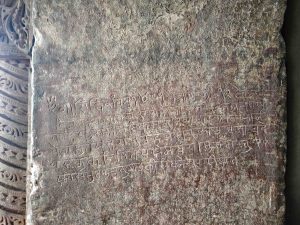
Record of a procession of the god Udalēsvara at Śiva temple, Udaypur (उदयपुर Madhya Pradesh) in saṃvat 1481. Engraved in 6 lines on the left jamb of the eastern entrance to the maṇḍapa. Working transcription prepared by Saarthak Singh (latest version 25/11/2019).
